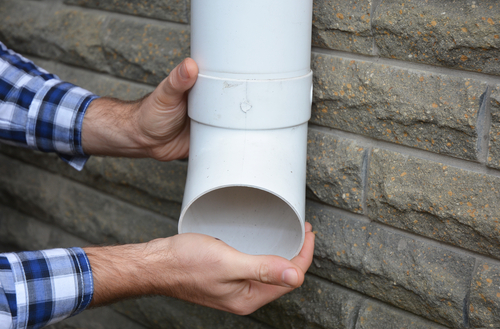
Gutter Cleaning: The Mystery of Downpipes
21st March 2022
If they are not cleaned or maintained, they can get blocked over time due to leaf litter and other trash being washed down them, causing a buildup that finally leads to a blockage. Large amounts of water accumulated in the base of the gutters and a covering of water over the mouth of the downpipe that does not seem to vanish or drains away very slowly are telltale signs of any blockages.

How To Check if You Have a Blockage
If you suspect a blockage, use a screwdriver or something similar to tap up and down the downpipe. If there are no blockages, you should hear a hollow, echo-like sound, but if there are blockages, it will sound more like a dull thud.
If you come across a blockage, it will need to be cleared as soon as possible. The ease of removal will depend on how bad the blockage is. For example, if the obstruction isn’t too bad, simply pushing your hose down the downpipe until it reaches the clog and then turning it on may be enough to drive out the debris.
If this does not work, the best option is to remove it. Again, how simple this depends on how surface water is handled on your specific property. In most circumstances, the downpipe should lead to a gully or drainage channel and then drain directly into it through a shoe attached to the downpipe’s base.
How To Clean The Downpipe
Downpipes may be readily removed from the running outlet and unscrewed from the wall. This isn’t always the case, though, and the downpipe might flow directly into the ground. If this is the case with yours, the only option is to cut the pipe near the base, remove it, clean it, and then reattach it.
When it comes to reconnecting it, you’ll need to utilise an adaptor or socket, preferably one with an access point like the one seen below. If this isn’t doable, you’ll need a straight PVC to cast iron adapter. You could, of course, simply blast the blockage with a hose or long stick while it is still in place, but this isn’t always the greatest option. You may be able to extract it from your downpipe, but it can quickly migrate down into your drain or soakaway and become a blockage, costing a lot more trouble and money.
As they say, prevention is better than cure. So if you want to learn how to prevent your gutters from getting clogged, check out this article.


